Mar 14. 2023 - Latest News
Duration: March 14 till now, 2023
Venue: Fl. 10, Bldg. C1, Nanshan iPark
On March 14, 2023, an interdisciplinary exhibition was held at Nanshan iPark, the transitional campus of SUSTech School of Design (hereinafter refer to as "the School"), with the theme of "No Boundaries?! An Interdisciplinary Journey". The exhibition is hosted by the School and co-organized by multiple members from the Department of Mathematics of SUSTech, the School of System Design and Intelligent Manufacturing of SUSTech, Shenzhen Institute of Advanced Technology Chinese Academy of Sciences, and Eastern Institute for Advanced Study, aiming to explore the differences in interdisciplinary perspectives and the potential value of similarities inspires everyone to express, observe and discuss in an interdisciplinary context, and promotes more interdisciplinary dialogue and cooperation within and outside SUSTech.
The exhibition revolves around three themes: 1. Where am I (identity of disciplines); 2. So close, so far (misunderstandings between disciplines); 3. So far, so close (commonality between disciplines). Presenting 10 works from multiple disciplines.


Foreword
This exhibition is a conversation across and between disciplines that is exciting and essential. Design is inherently and necessarily an interdisciplinary activity. Designers draw upon knowledge in every area of research. As designers, we are deeply interested in what researchers are doing in other fields and we seek to understand so that we can engage this knowledge into our world-view. In return, we hope to share our excitement with others.
Thomas KVAN
Dean, Design School, SUSTech
This exhibition is a creative and imaginative attempt that showcases the boundless potential of young students through a cross-disciplinary perspective that integrates different fields such as mathematics, art, design, and more. We look forward to more people joining this interdisciplinary journey in the future.
LIU Yuening
Director, SUSTech Museum
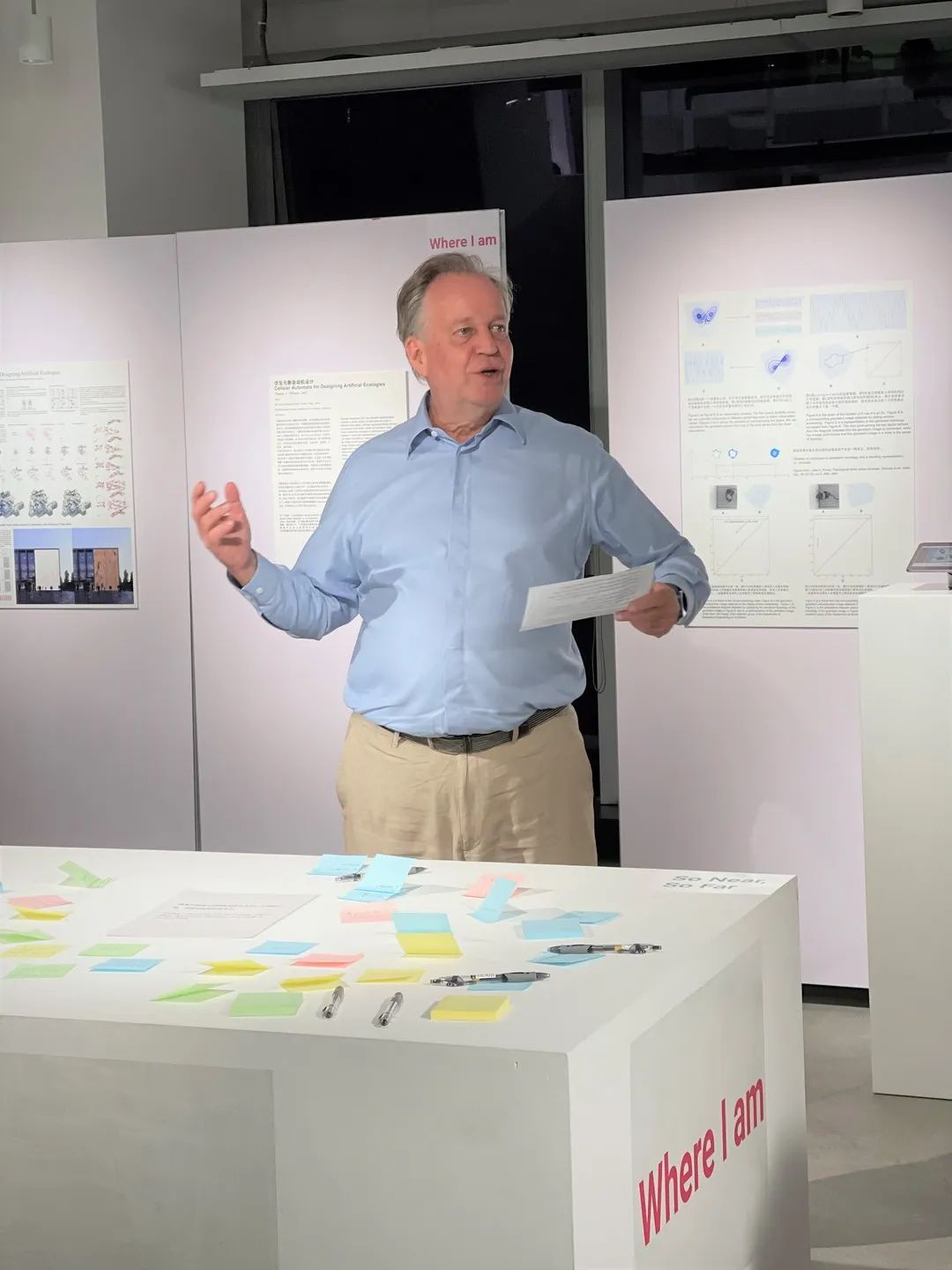
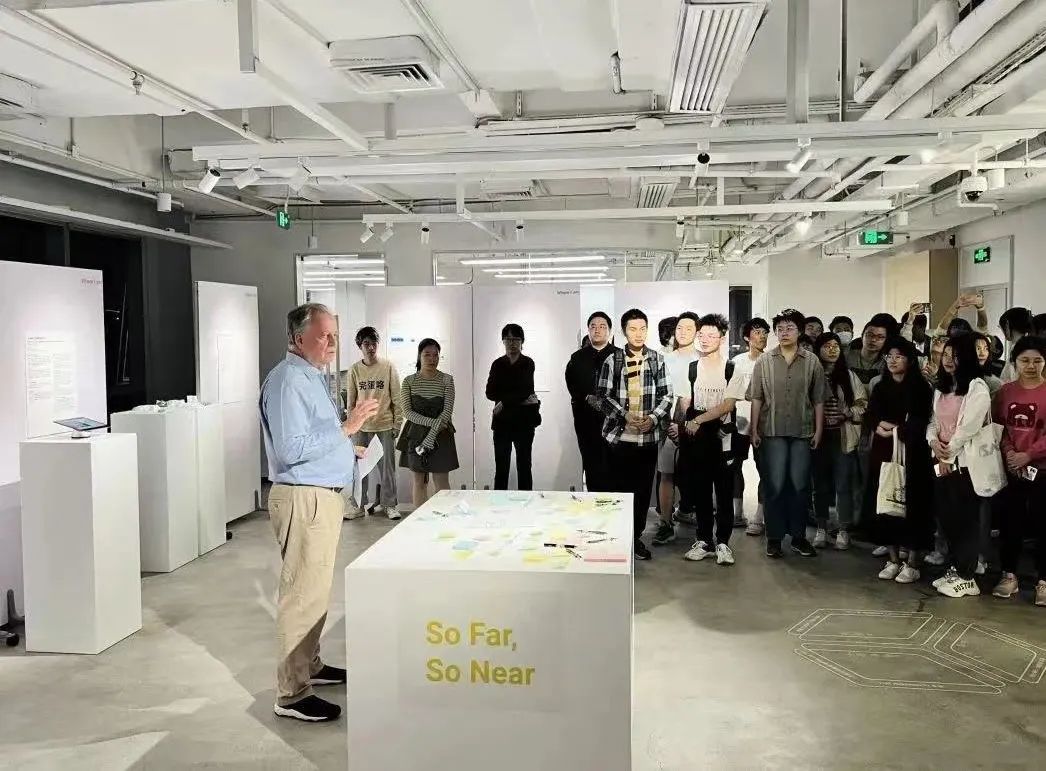
Opening Speech
Dean Thomas KVAN made an opening speech and extended a warm welcome to the audience. KVAN said that design is essentially multi-disciplinary and interdisciplinary, interpenetrating and collaborating with other disciplines to study what is happening in the world and how it works, and transform it into applications that are beneficial to society. The ultimate goal is to improve the quality of life for everyone and minimize the impact on the world's ecology. Design also stimulates dialogue about what is missing, and in the process of colliding with other disciplines, uncovers areas that have not yet been studied, and this exhibition is part of this dialogue. Through this exhibition we can see the close and rich connections within and outside SUSTech. If we can come up with a new idea tonight by appreciating the works, then this exhibition will be a success. KVAN said that each discipline can provide information, stimulate interest and inspiration for other disciplines, and perhaps promote new research areas.


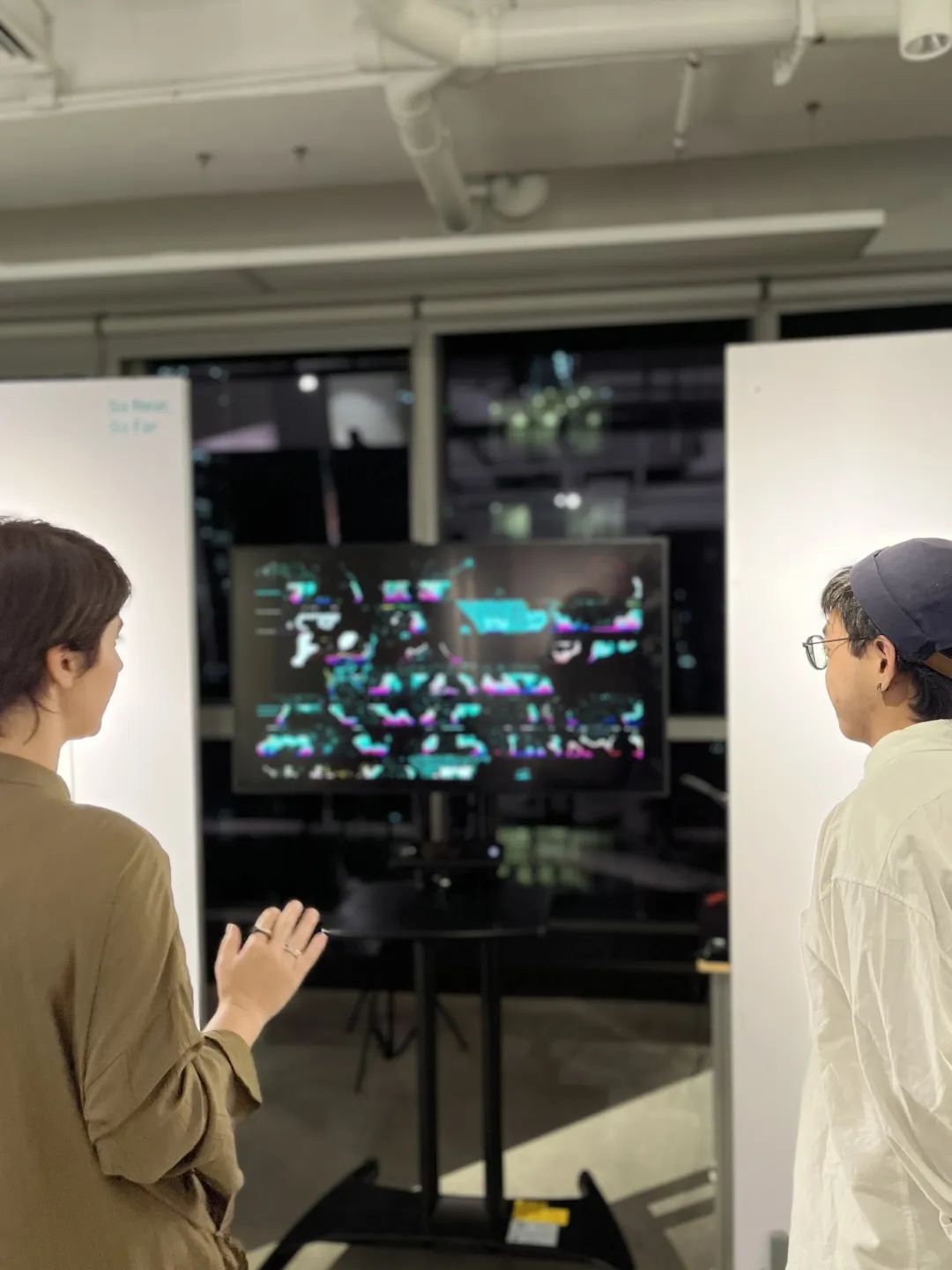



At the Exhibition

 Exhibition Works
Exhibition Works
Work 1: The Beauty of Imperfection
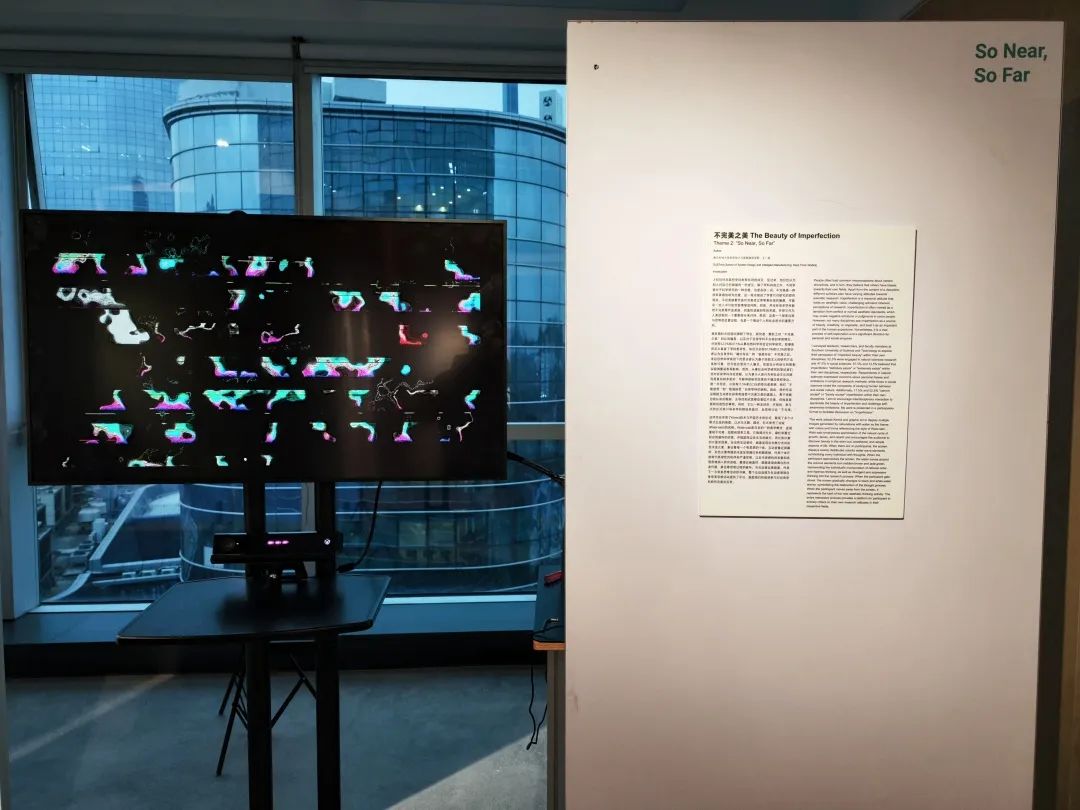

Author: Kenji WANG Yimin, SUSTech School of System Design and Intelligent Manufacturing
Introduction to the work: This work shows multiple images generated by calculations, with water as the theme. The color and form refer to the style of Wabi-sabi, which emphasizes the beauty of imperfection, ephemerality and simplicity.
Work 2: Isomorphism and Heterogeneity
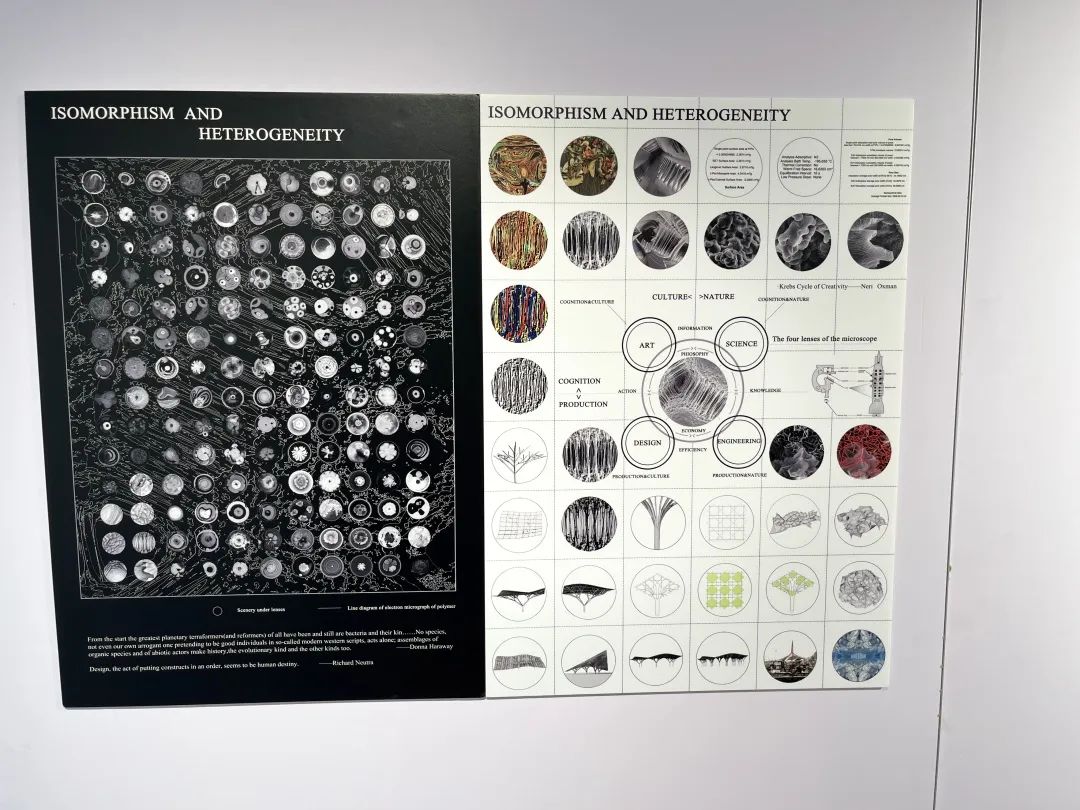

Author: CHE Ran, YAO Zhennan, ZHANG Wenkang, SUSTech School of Design
Introduction to the work: The story begins with an image of a molecular connection structure with regular distribution at the nanometer level. This image is transformed, derived, and re-practiced in the form of homogeneous domestication and heterogeneous domestication, thus bringing out a kind of hidden deepness in the human soul. Skills are expressed in the work.
Work 3: Cellular Automata for Designing Artificial Ecologies
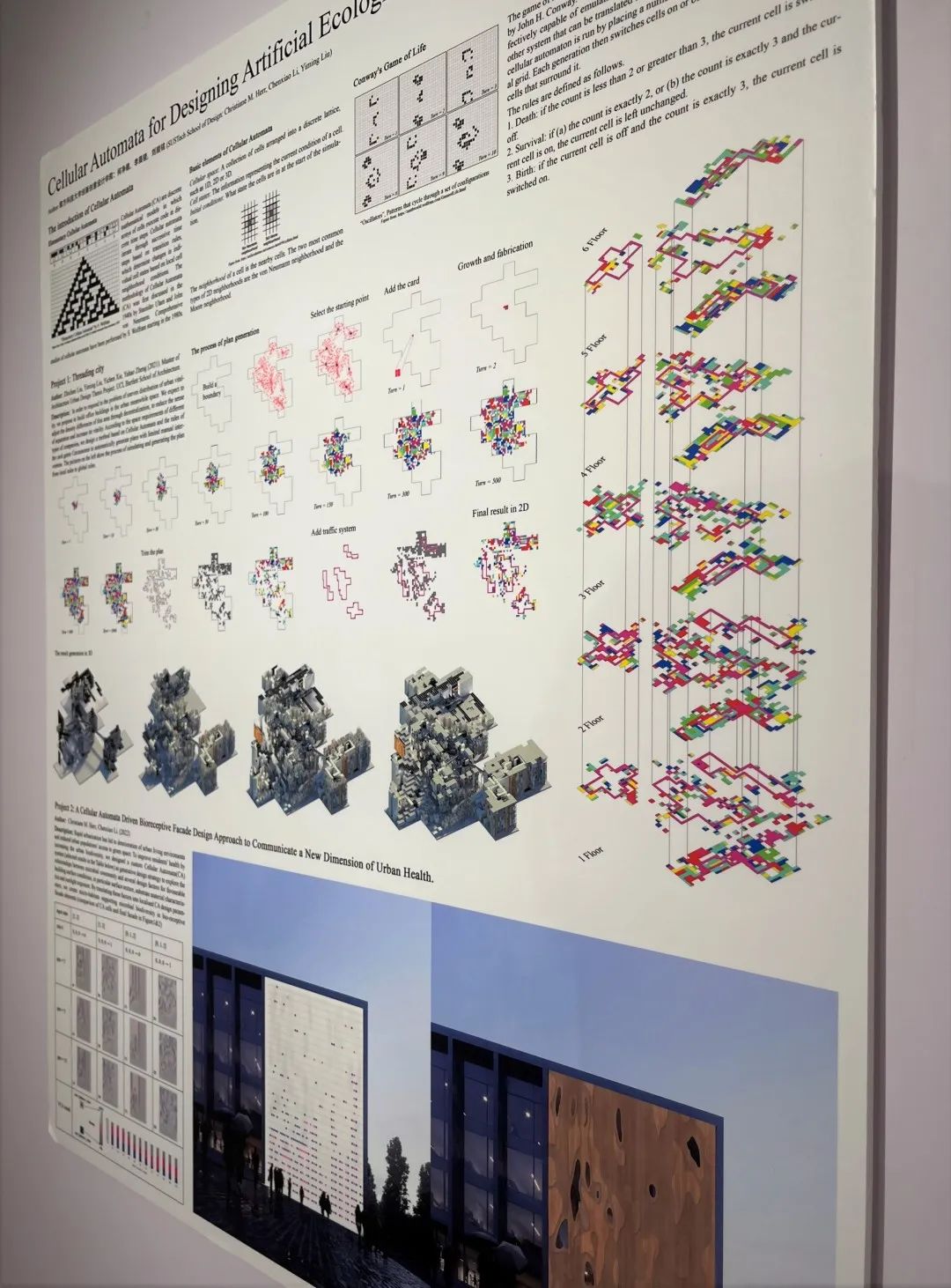

Author: Christiane M. HERR, LI Chenxiao, LIU Yiming, SUSTech School of Design
Introduction to the work: The creators use CA as a medium to connect biological growth and formation processes to architectural and urban design problems, applying a basic CA model extracted from mathematics and further extending and adapting the model to support generative design work.
Work 4: Soft Geometric Aesthetics
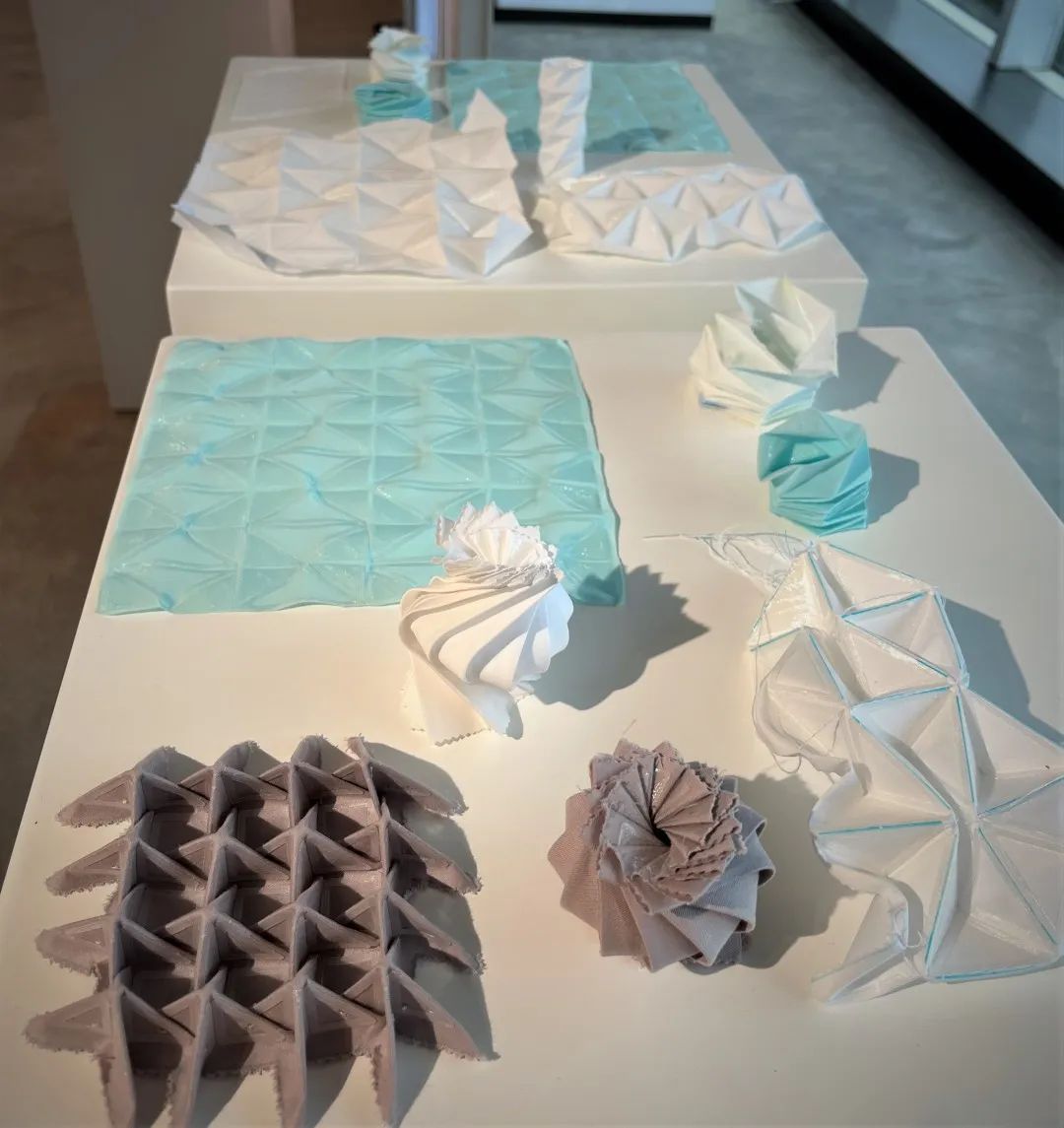

Author: GE Lan (Instructor), YANG Ran, DHU College of Textiles
Introduction to the work: The work introduces the classic origami structure in the field of geometry, hoping to combine it with fabric materials through FDM fusion lamination and 3D printing technology to give the fabric certain functional attributes and better integrate the fabric with 3D printing technology.
Work 5: Visualizing the Hidden Curves


Author: FENG Pingyao, SUSTEch Department of Mathematics
Introduction to the work: The creators located and calculated the formulas for the "hidden curves", which are highlighted in blue in each figure. Behind these well-drawn images are almost crazy and chaotic calculations. Perhaps this is what mathematics (and even life) has always been like.
Work 6: From Order to Disorder, the Human Factor and Natural Chaos
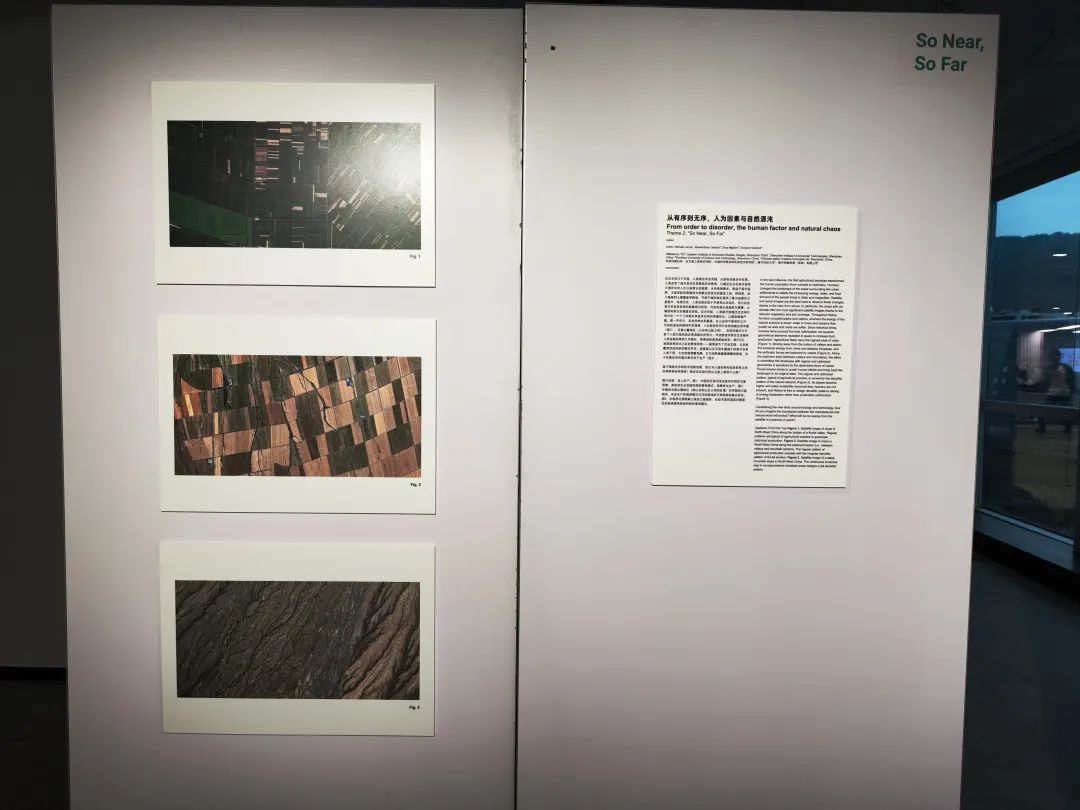

Author: Michele Lancia from Eastern Institute for Advanced Study, Massimiliano Galluzzi from Shenzhen Institute of Advanced Technology Chinese Academy of Sciences
Introduction to the work: Humans have modified the landscape of areas surrounding urban settlements to meet the growing energy, water and food needs of people living in cities or megacities. Based on new developments around ecology and technology, how will the boundaries between the artificial and natural worlds evolve? What will we see from satellites hundreds of years from now?
Work 7: From Animal Behaviors to the Shape of Data
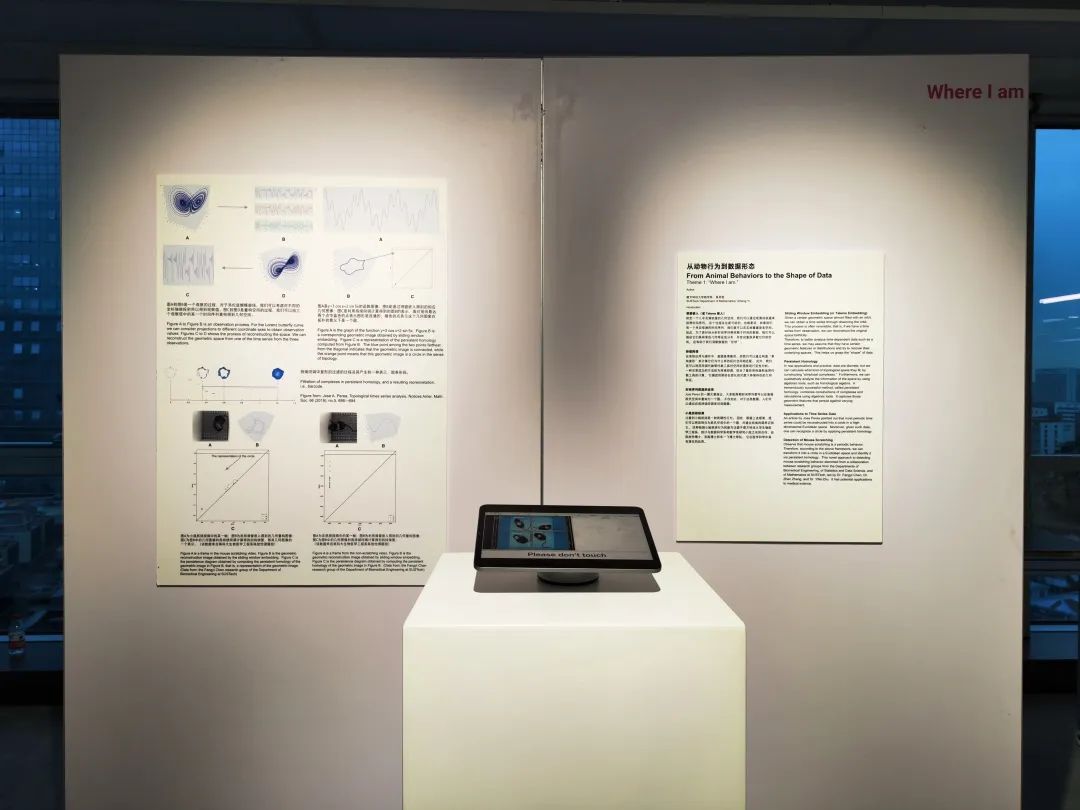

Author: YI Siheng, SUSTech Department of Mathematics
Introduction to the work: The creator noticed that mouse scratching is a periodic behavior. Given a geometric space almost full of orbits, a time series can be obtained by observing the orbit. Therefore, in order to better analyze data such as time series, creators assume that they have certain geometric characteristics or distributions and try to recover the space that hosts them.
Work 8: Geometric Information in Phonetic Signals
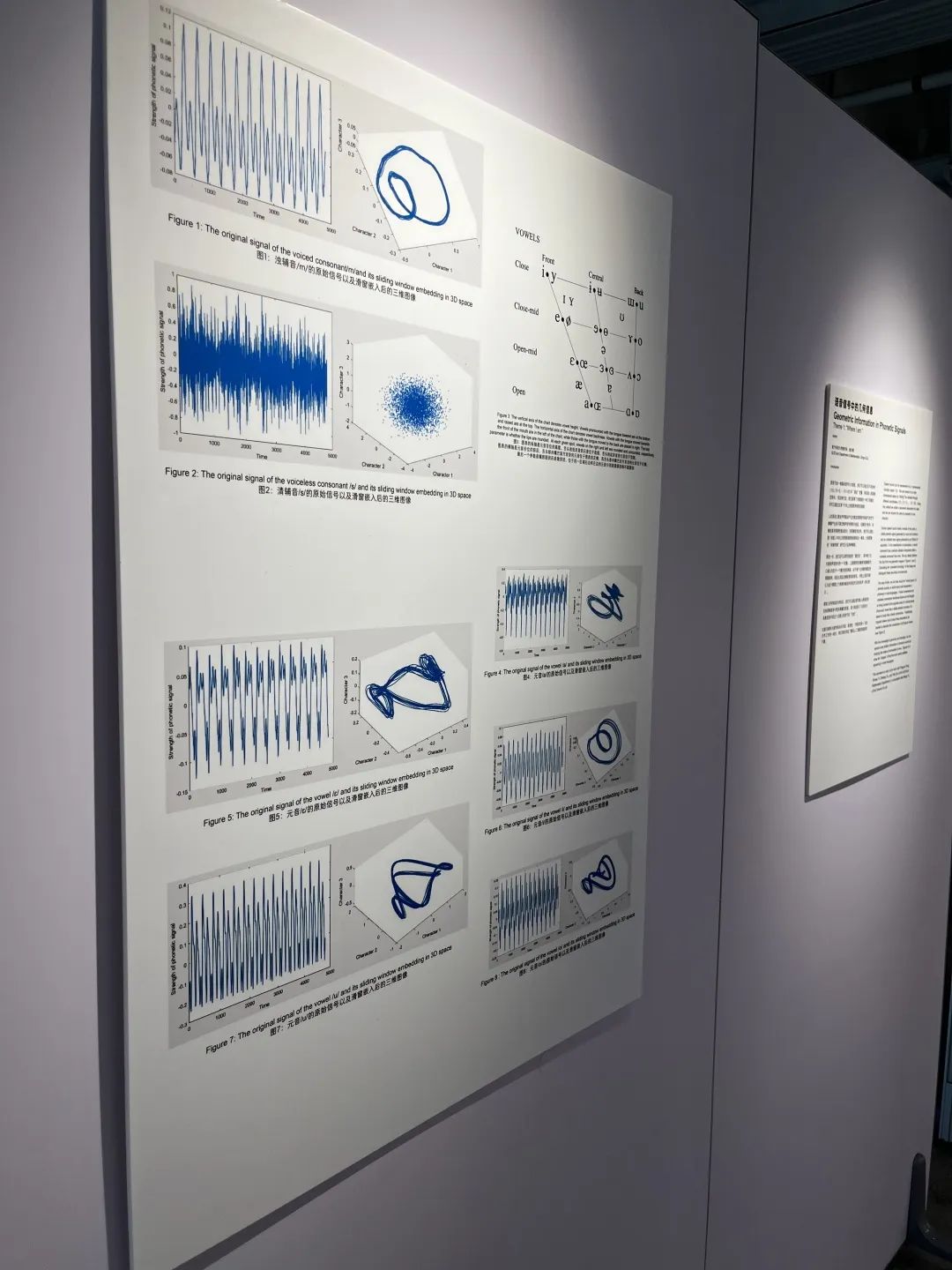

Author: QU Qingrui, SUSTech Department of Mathematics
Introduction to the work: Human speech is mainly composed of two parts: a stable periodic signal generated by vocal cord vibration and an unstable noise signal generated by air friction during inhalation. With the help of geometry and topology knowledge, creators can explore more hidden information in speech by studying the shape of embedded curves.
Work 9: Images are Stored in Klein Bottles
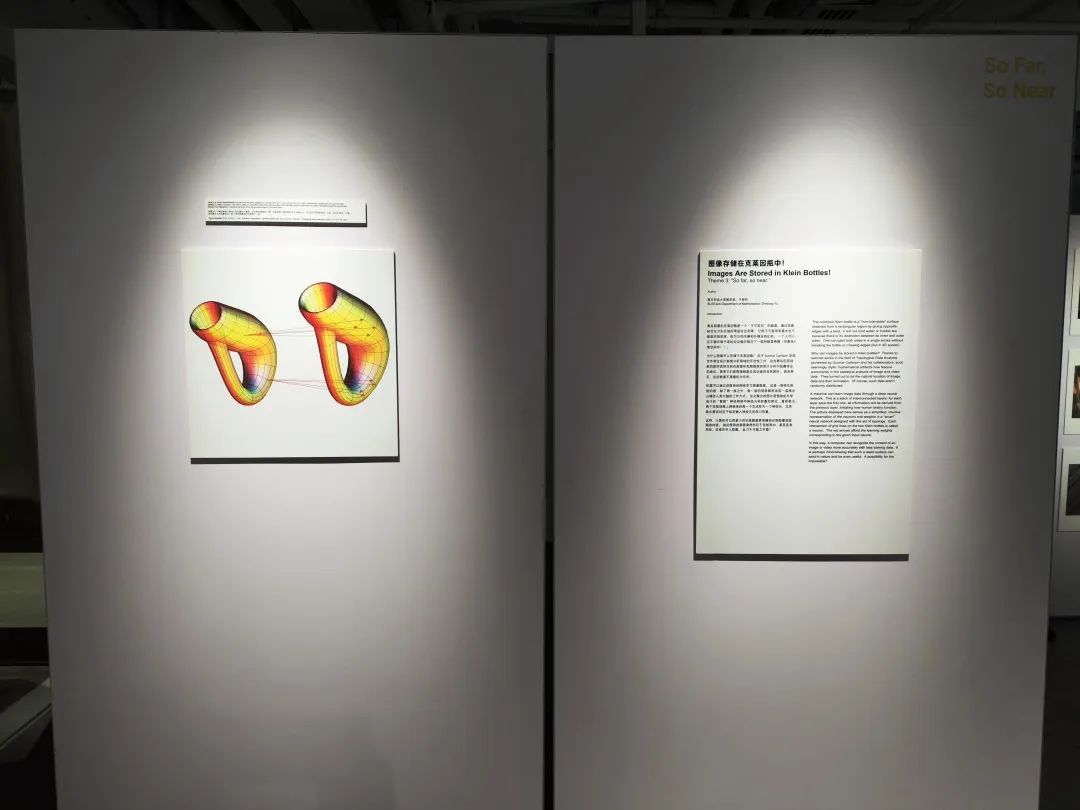

Author: YU Zhiwang, SUSTech Department of Mathematics
Introduction to the work: Why can images be stored in Klein bottles? Thanks to the pioneering work of Gunnar Carlsson and his collaborators in the field of topological data analysis, these seemingly idyllic mathematical creations currently figure prominently in the statistical analysis of image and video data. It turns out that they are the natural home for image data and its animation.
Work 10: Stereotype


Author: Exhibition audiences
Introduction to the work: The exhibition brings together audiences from different disciplinary backgrounds, who write down other people’s stereotypes about their own disciplines. By presenting, reflecting on and comparing different methods and perspectives in an open and friendly way, it strengthens interdisciplinary understanding and clears up potential obstacles to cooperation. This resulted in the creation of the 10th work in this exhibition.
The works exhibited in this interdisciplinary exhibition involve mathematics, physics, engineering, materials science, design, architecture, environmental ecology, geography and other disciplines. By sharing ongoing interdisciplinary research, everyone can be inspired through observation, communication and creation. Reflect on the differences between branches of knowledge, break down the barriers between disciplines, and explore the intersection and integration between different disciplines.

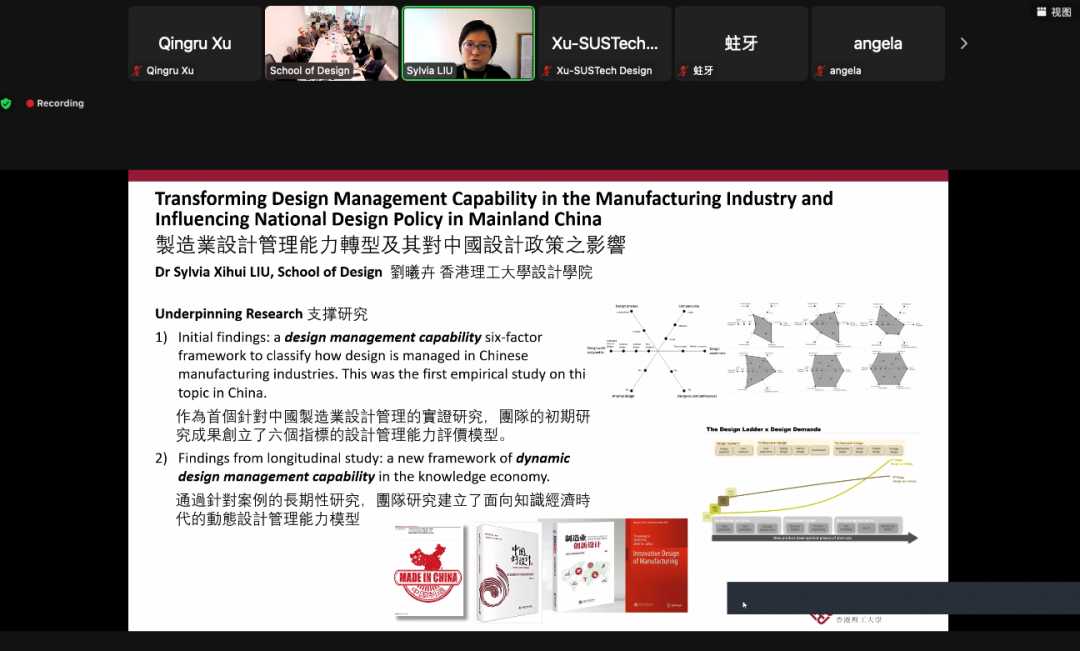
Nov 9. 2022 - Latest News
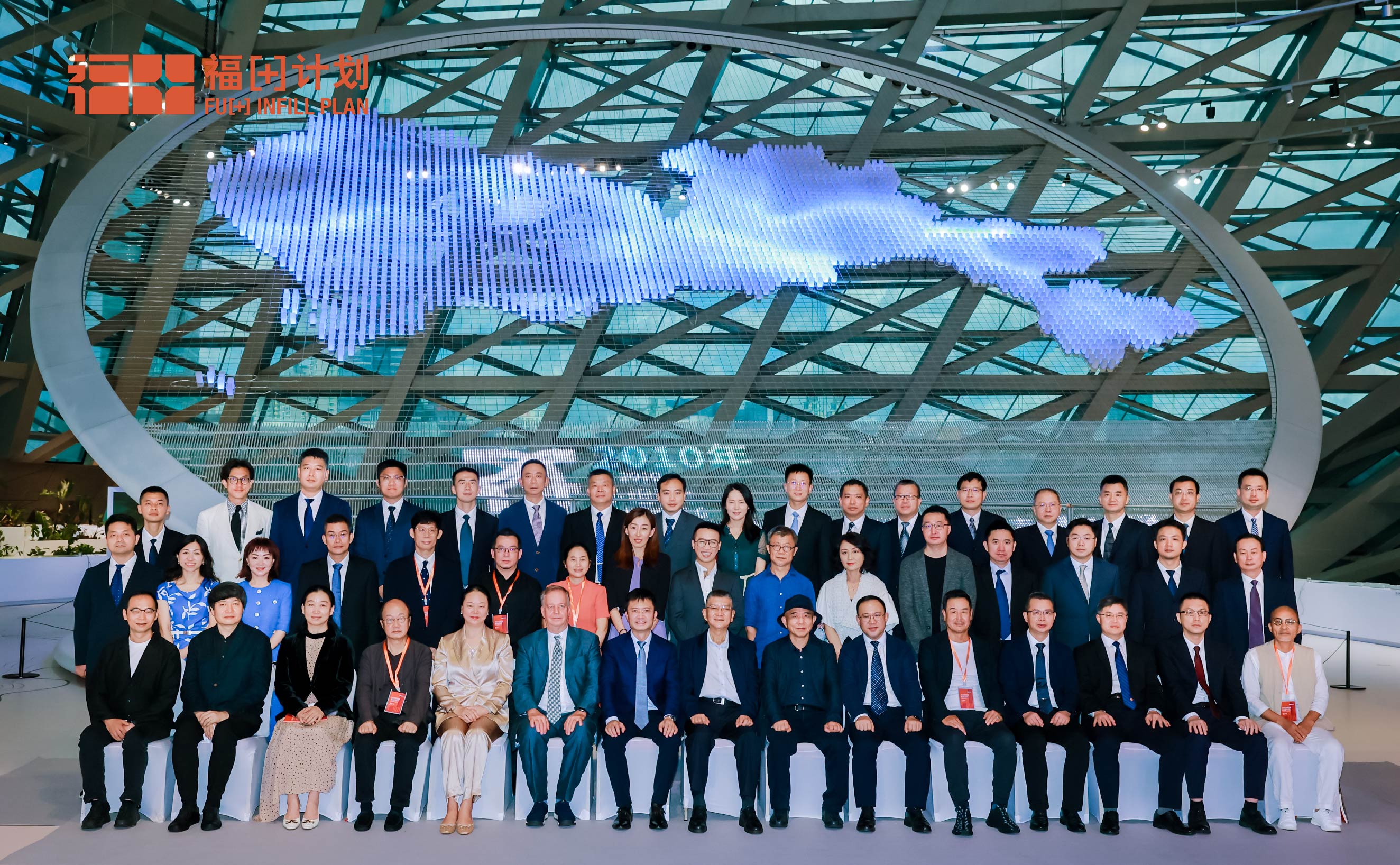
Aug 20. 2022 - Latest News
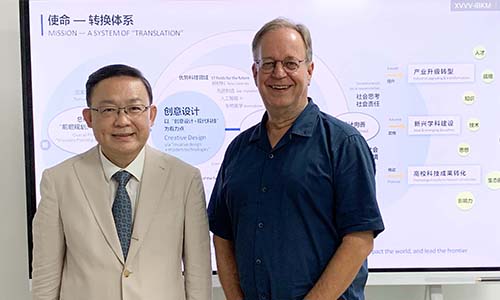
Sep 17. 2021 - Latest News